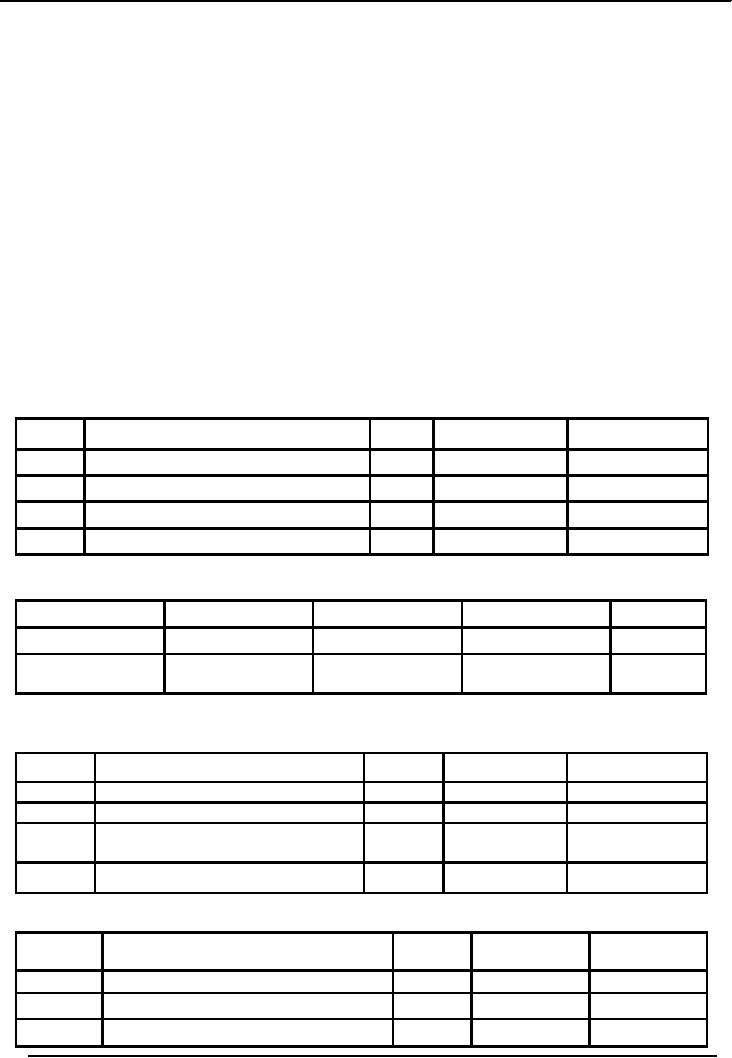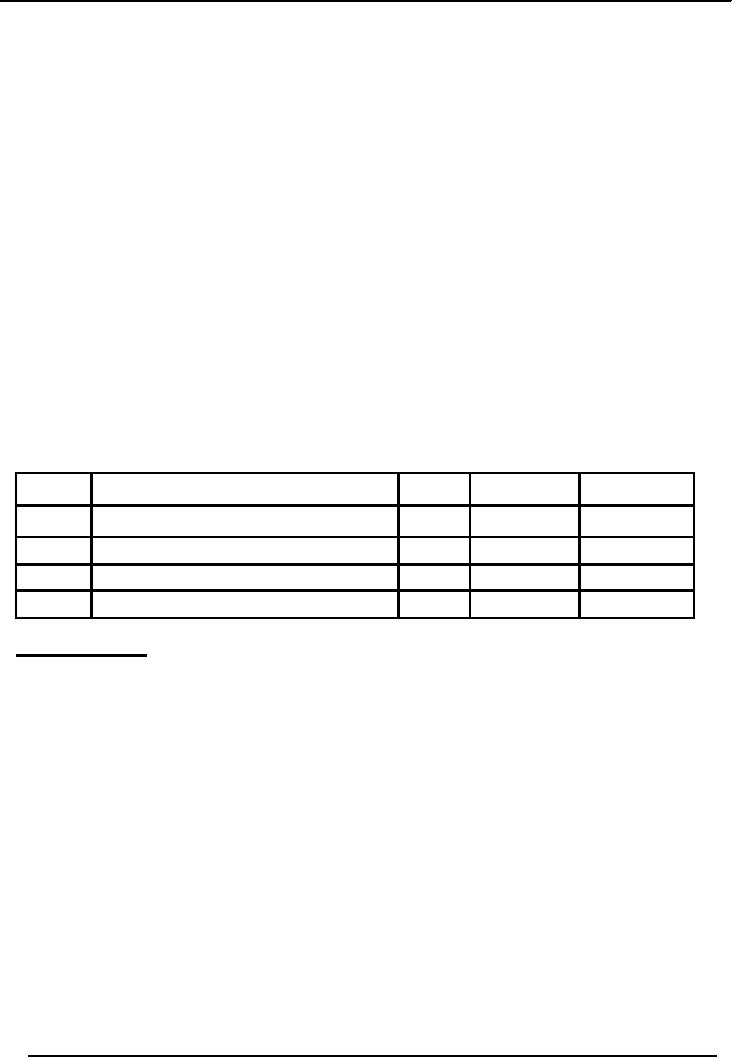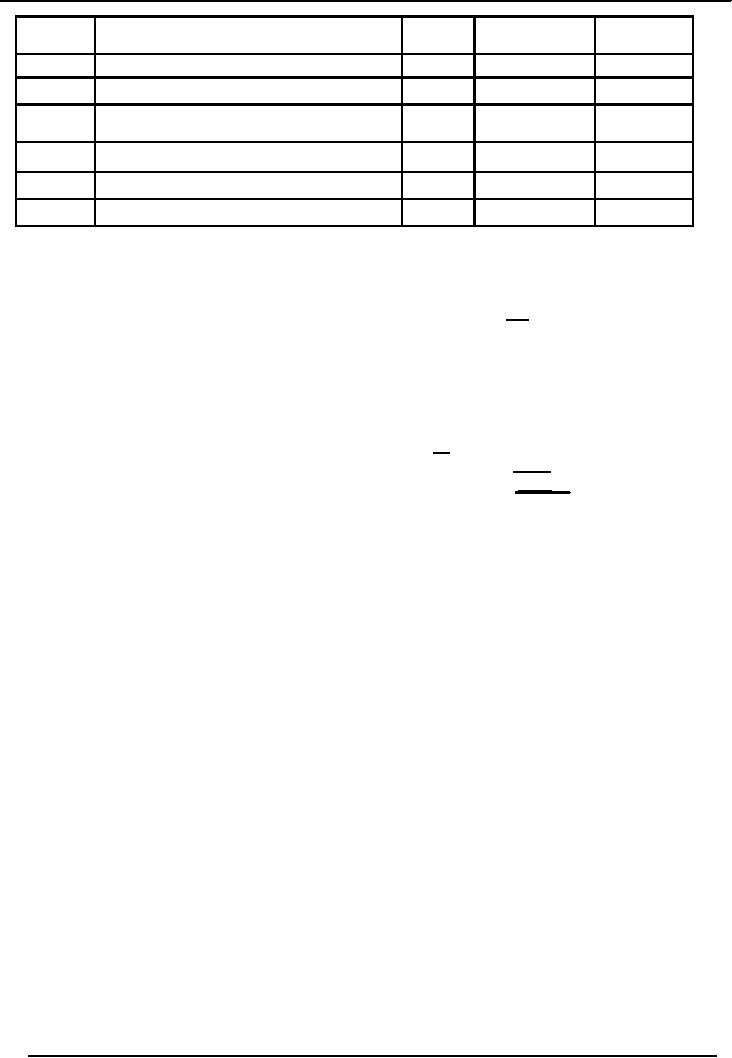 |
Business transactions |
| << Preparing Balance Sheet from Trial Balance |
| Adjusting Entry to record Expenses on Fixed Assets >> |

Financial
Statement Analysis-FIN621
VU
Lesson-6
ACCOUNTING
CYCLE/PROCESS
(Continued)
Business
transactions during August,
2006
Now
let us suppose that
during the month of August, actual
business operations
commenced
and Khizr provided services
to clients at the agreed commission/fee rate of 2% of
rental
value
of property. Suppose rental
value of property during
August was Rs.532, 000.
Commission/fee
earned
at the rat of 2% comes to Rs.10,
640. Commission actually received
(in cash) during August
was
Rs.5,
000, the rest was to be paid
later.
Provided
services to clients at the agreed
commission/fee rate of 2% of rental value of
property.
Rental
value of property during
Aug:
Rs.532,
000
Rental
Value
= Rs.532,
000
Commission
(532,000 x 2%)
= Rs.
1 0,640
Actual
Cash Received
= Rs.
5,000
Date
Description
L/F
Dr.
Cr.
Aug
Cash
Account
5,000
Accounts
Receivable
5,640
Commission
Received
10,640
Commission
Income Received
Advertising
expenses (paid in advance) Rs.645.
Date
Description
L/F
Dr.
Cr.
Cash
Account
645
Advertising
expense
paid
�
Salaries
for Aug (to be paid in
September) Rs.7, 400.
Date
Description
L/F
Dr.
Cr.
Salaries
Expense
7,400
Salaries
Payables
7,400
Accrued
salaries for the month
of
August
Telephone
bill for Aug (to be
paid in September) Rs.400.
Date
Description
L/F
Dr.
Cr.
Utilities
Expense
400
Utilities
bill Payables
400
Accrued
telephone bill
26

Financial
Statement Analysis-FIN621
VU
Expenses
were:-
Advertising
expenses (paid in advance)
Rs.
645
Salaries
for Aug (to be paid in
September)
Rs.7,
400
Telephone
bill for Aug (to be
paid in September)
Rs.
400
The
above is incomplete list of Expenses.
There are certain invisible
expenses
amounting
to Rs.195 (in which no cash
is involved), which are recorded at the
end of accounting period.
Before
we take these up, let us
distinguish between Expenditure and
Expenses.
Expenditure Vs
Expenses
Expenditure:
It is the
cost benefiting or spreading over
two or more accounting periods.
Expense
is
the
portion
of Expenditure for one accounting
period only.
Examples:
Expenditure on fixed assets is
incurred in lump sum. Then
there are pre-paid costs
e.g.
insurance,
pre-paid rent, for more than
one year/accounting period. It may be
noted that expenditure
on
advertisements,
employees training, are directly
charged to expenses because in
these cases, the
number
of
accounting periods over which revenue is
likely to be produced (or increased)
because of these, are
not
readily estimable.
�
Incomplete
list of Expenses: Invisible
expenses (non cash
involved), recorded at the end of
accounting
period.
Date
Description
L/F
Dr.
Cr.
Depreciation
Expense-Building
150
Depreciation
Expense-Equipment
45
Accumulated
Depreciation
195
Depreciation
Expenses
Invisible
Expenses
Cost
value of Building
= Rs.
36,000
Estimated
useful life
= 20
years
Expense
for one month will be
calculated as follows:
=
36,000 x 1/240
= Rs.
150 per month
This
Rs.
150 is the
portion of expenditure of Rs.36,
000. This
expense is technically called
Depreciation
Note:
Land is not depreciated
Value
of Office Equipment
=
5,400
Estimated
useful life
= 10
years
The
calculation of expense on equipment
will be
Calculated
as follows:
=
5,400 X 1/120
= Rs.
45
This
Rs. 45 is technically called
depreciation
on
Office Equipment.
Pre-paid
costs e.g. Insurance,
Pre-paid rent, will be recorded as
follows:
27

Financial
Statement Analysis-FIN621
VU
Date
Description
L/F
Dr.
Cr.
Prepaid
Rent
12,000
Cash
Account
12,000
Rent
paid in advance
Rent
Expense
1,000
Prepaid
Rent
1,000
Recording
rent expense
Income
Statement
For
the period ending August 31,
2006
Revenues
Rs.
Sales
Commission earned.
10,640
Expenses
Advertising
expenses.
645
Salaries
expenses.
7,400
Telephone
expenses.
400
Depreciation
expense: building
150
Depreciation
expense: office
equipment
45
Total
Expense
8,640
Net
Income
2000
With
this background, let us now
move on to the fifth step in the
Accounting Cycle.
28
Table of Contents:
- ACCOUNTING & ACCOUNTING PRINCIPLES
- Dual Aspect of Transactions
- Rules of Debit and Credit
- Steps in Accounting Cycle
- Preparing Balance Sheet from Trial Balance
- Business transactions
- Adjusting Entry to record Expenses on Fixed Assets
- Preparing Financial Statements
- Closing entries in Accounting Cycle
- Income Statement
- Balance Sheet
- Cash Flow Statement
- Preparing Cash Flows
- Additional Information (AI)
- Cash flow from Operating Activities
- Operating Activities’ portion of cash flow statement
- Cash flow from financing Activities
- Notes to Financial Statements
- Charging Costs of Inventory to Income Statement
- First-in-First - out (FIFO), Last-in-First-Out (LIFO)
- Depreciation Accounting Policies
- Accelerated-Depreciation method
- Auditor’s Report, Opinion, Certificate
- Management Discussion & Analyses (MD&A)
- TYPES OF BUSINESS ORGANIZATIONS
- Incorporation of business
- Authorized Share Capital, Issued Share Capital
- Book Values of equity, share
- SUMMARY
- SUMMARY
- Analysis of income statement and balance sheet:
- COMMON –SIZE AND INDEX ANALYSIS
- ANALYSIS BY RATIOS
- ACTIVITY RATIOS
- Liquidity of Receivables
- LEVERAGE, DEBT RATIOS
- PROFITABILITY RATIOS
- Analysis by Preferred Stockholders
- Efficiency of operating cycle, process
- STOCKHOLDERS’ EQUITY SECTION OF THE BALANCE SHEET 1
- STOCKHOLDERS’ EQUITY SECTION OF THE BALANCE SHEET 2
- BALANCE SHEET AND INCOME STATEMENT RATIOS
- Financial Consultation Case Study
- ANALYSIS OF BALANCE SHEET & INCOME STATEMENT
- SUMMARY OF FINDGINS